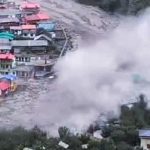Srinagar, Sep 03: The rural hospitals in Jammu and Kashmir are facing a shortage of nursing and paramedical staff, the Rural Health Statistics (RHS) report 2021-22 of the Union Health Ministry has revealed.
The Public Health Centres (PHCs) and Community Health Centres (CHCs) in rural areas are grappling with manpower shortages and these posts have not been filled over the years, adding to the woes of patients.
As per the yearly report, there are 293 posts of nursing staff which include 158 posts at PHCs and 135 posts at CHCs in rural areas of Jammu and Kashmir.
The report mentions 402 posts of female health workers vacant at sub-centres in J&K’s rural areas. Also, 217 posts of male health workers are lying vacant at the sub-centres.
It also reveals that 34 posts of health assistants are vacant in PHCs in rural areas. Besides, there are 100 posts of laboratory technicians that are also vacant in rural hospitals.
As per the report, there are some 180 posts of pharmacists vacant at PHCs and CHCs in rural areas. The lack of healthcare facilities in rural areas is evident by the fact that patients across places are compelled to move to district or sub-district hospitals for treatment of minor ailments.
There are 148 vacant posts of pharmacists in PHCs and 32 posts of pharmacists at CHCs are lying vacant in the rural areas in JK, it adds.
The publication is based on data provided by the States/Union Territories. The data has been analysed and cross-checked for consistency and also validated with the data available from other sources.
It notes that there are 30 posts of radiographers vacant in the CHCs in rural areas. 74 posts of lab technicians also remain vacant at PHCs and 26 similar posts are vacant in CHCs.
Statistics Division, Ministry of Health and Family Welfare has been bringing the RHS out every year and covers approximately 2 lakh public health facilities serving the whole population of the country.
The RHS 2021-22 is a vital source of information on rural health infrastructure and human resources available in the public health institutions of all States and Union Territories. It also facilitates the identification of the need for additional resources for better management of the public health delivery system.
The rural health data is extensively used for decision-making and policy intervention by government policy planners, researchers, NGOs and other stakeholders.










